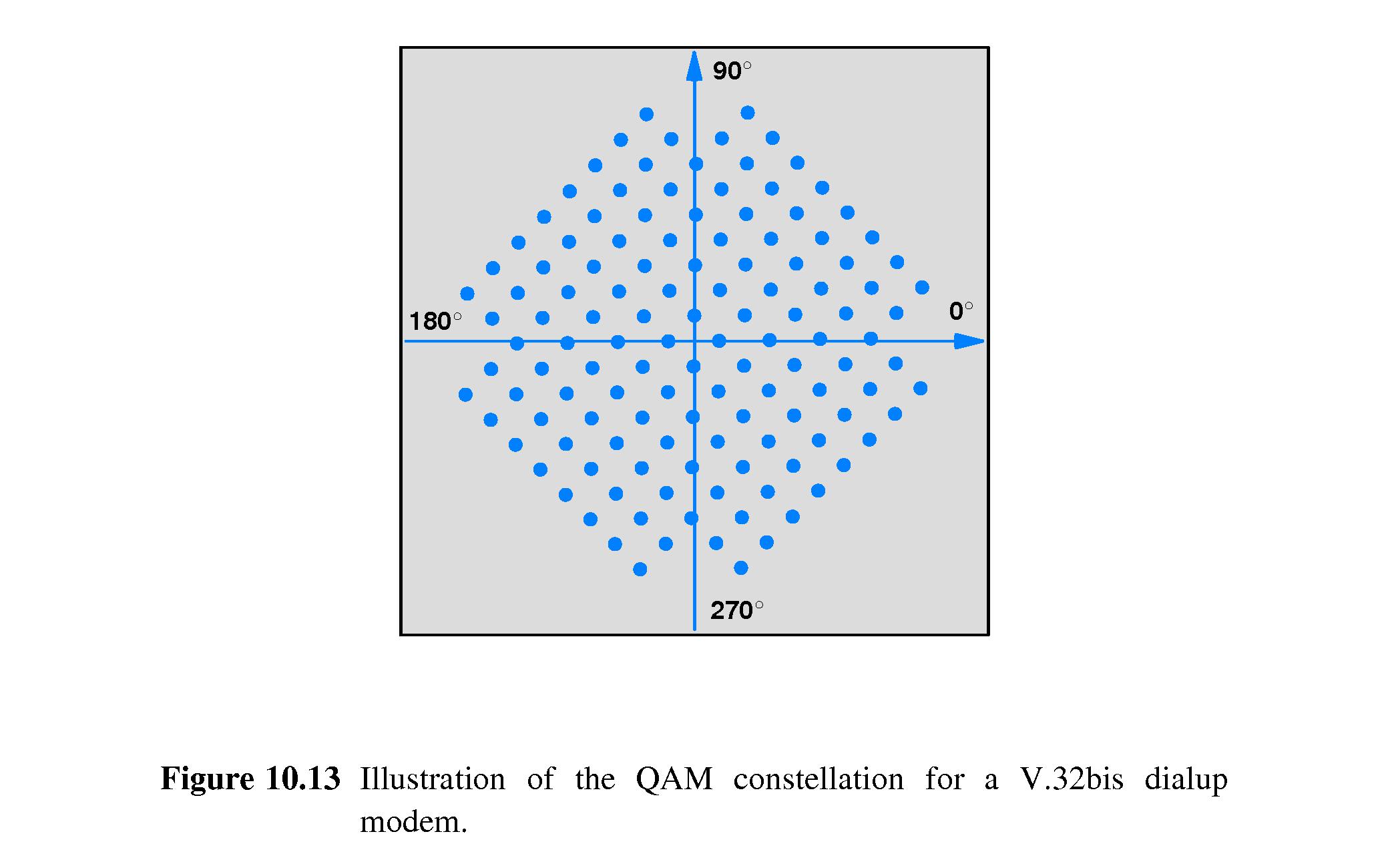(rev. Feb 17, 2015)
Notes On Chapter Ten
-- Modulation and Modems
- 10.1 Introduction
- How information is used to change a high-frequency
electromagnetic wave, and
- Why that is important
- 10.2 Carriers, Frequency, and Propagation
- Depending on the medium there will be certain frequencies that
propagate better than others.
- A common way of getting good performance is to place a continuously
oscillating "carrier" electromagnetic wave on a medium - one that
propagates well - and to transmit information by making small
changes to the carrier.
- 10.3 Analog Modulation Schemes
- The small changes made to the carrier are called "modulation"
- Basically there are only three changes one can make to a wave:
- Amplitude modulation (AM)
- Frequency Modulation (FM)
- Phase Shift Modulation
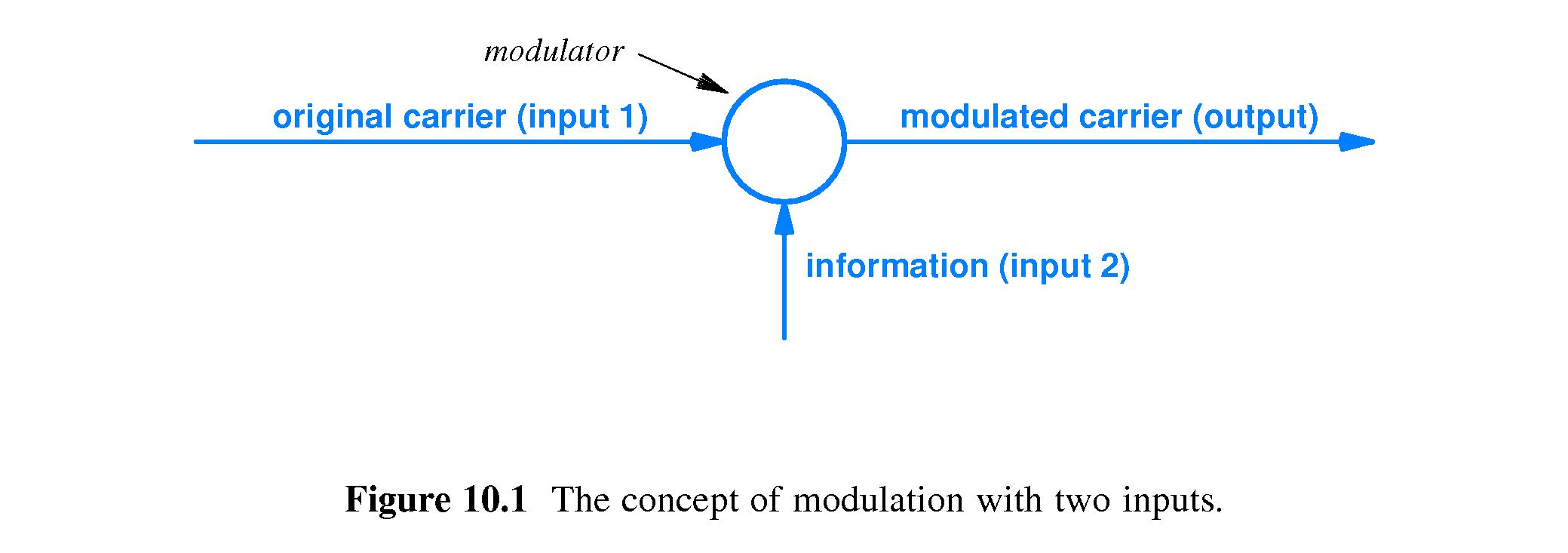
- 10.4 Amplitude Modulation
- The amplitude of the carrier is varied in proportion to the signal
being sent.
- When AM is used to carry an analog signal, the "envelope" of the
modulated wave has the shape of the signal.
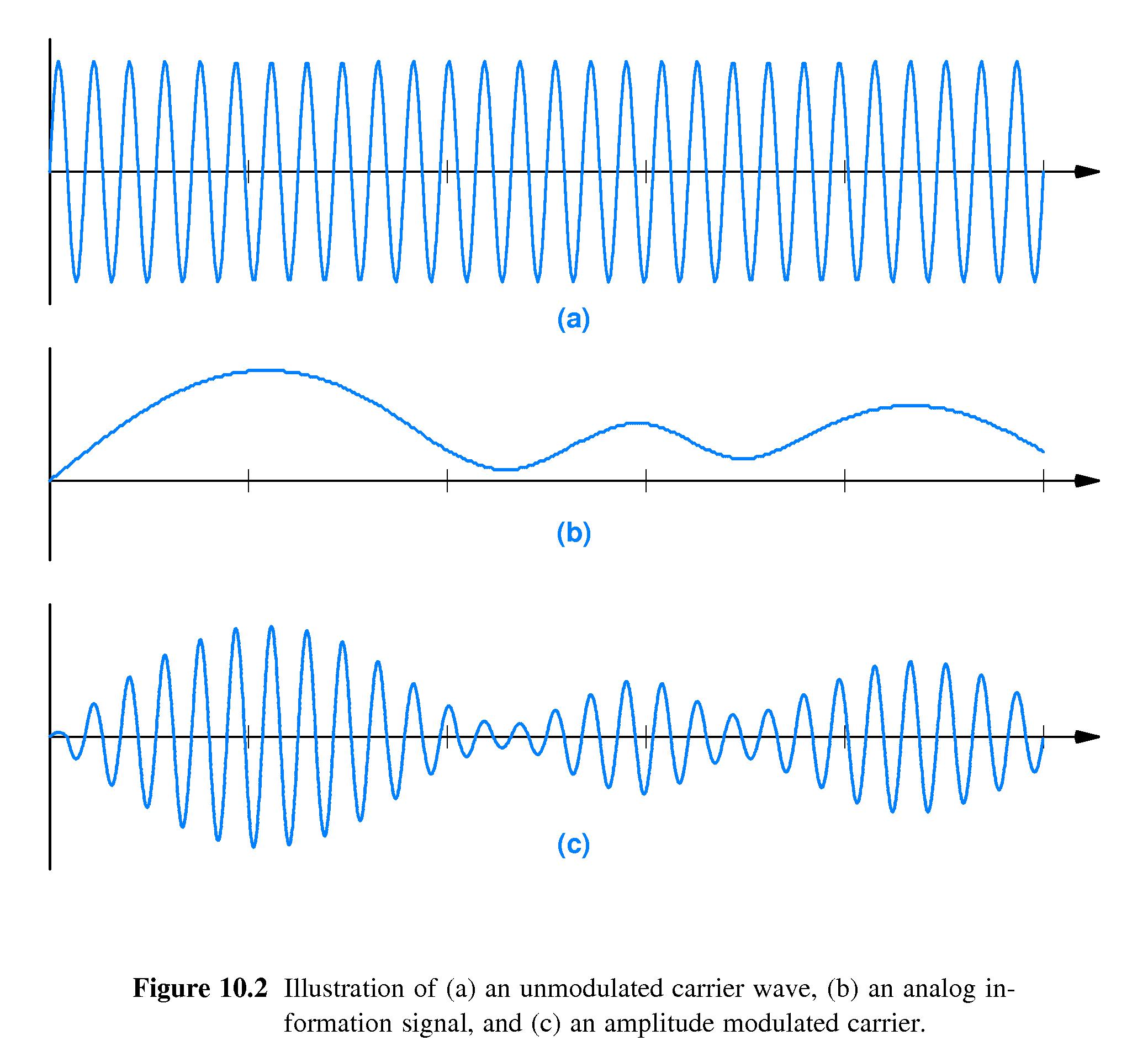
- 10.5 Frequency Modulation
- FM slightly increases the frequency of the carrier corresponding to
where the signal is strong, and decreases it slightly corresponding
to where the signal is weak.
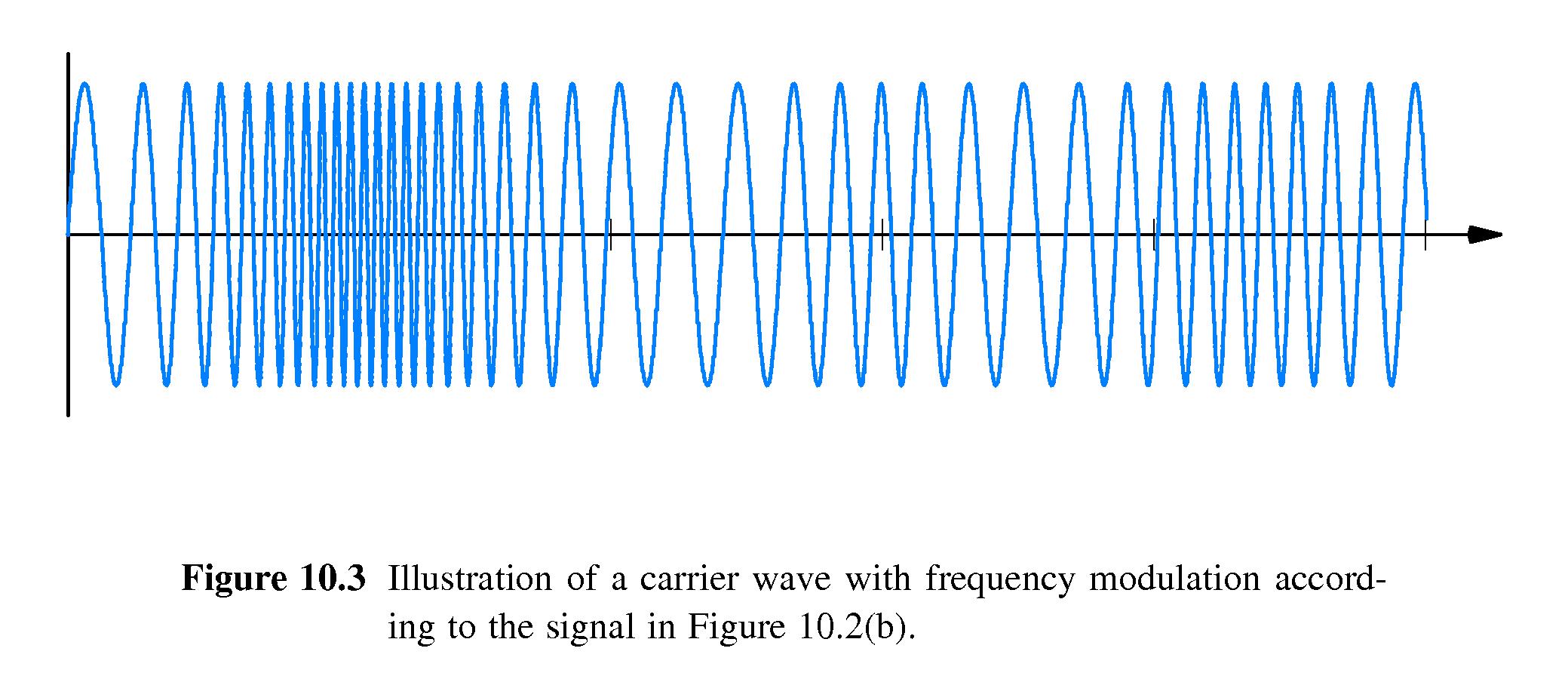
- 10.6 Phase Shift Modulation
- Phase shift modulation changes "the offset from a reference time at
which the sine wave begins" i.e. it "slides" the waveform forward or
backward slightly.
- It is difficult to distinguish from FM in the case of an analog
signal, so phase shift modulation is mostly used on digital signals.
- 10.7 Amplitude Modulation and Shannon's Theorem
- Unlike the exaggerated depiction of figure 10.2(c),
AM actually varies the amplitude only slightly, and does
not allow the amplitude to approach zero.
- Lowering the amplitude too much would significantly lower the
signal-to-noise ratio, which in turn could lead to lower effective
bandwidth.
- One might visualize the signal getting "lost in the noise."
- 10.8 Modulation, Digital Input, and Shift Keying
- When digital data is used to modulate a carrier, it is often called
shift keying, instead of modulation.
- There is a small fixed set of possible modulated values.
- For example, with AM, there might be only the possible of running the
carrier at full amplitude to represent a 1-bit, and at some
significantly smaller amplitude to represent a 0-bit.
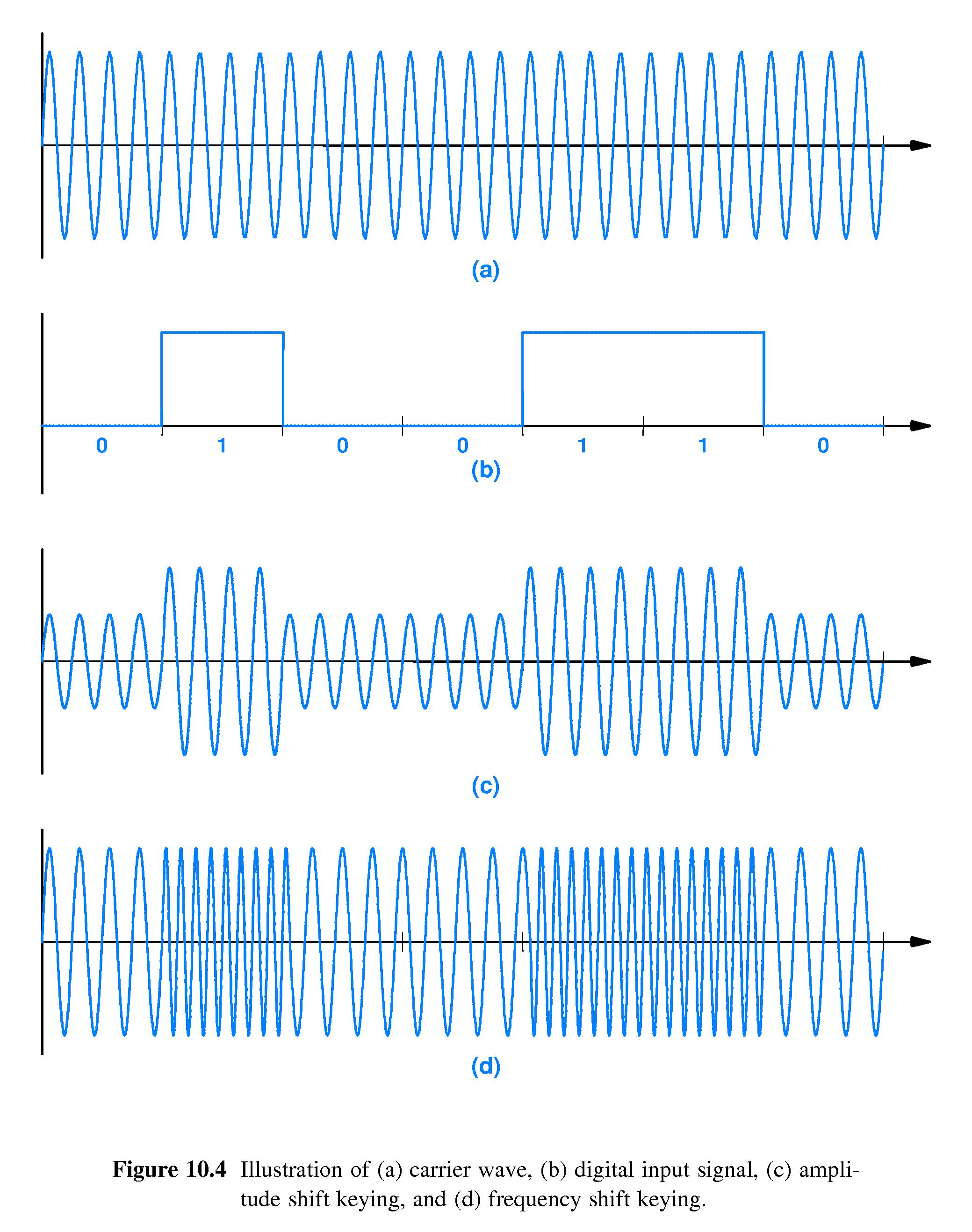
- 10.9 Phase Shift Keying
- phase shift keying provides a convenient way to allow more than one
bit to be sent during each period of the carrier.
- For example, the four phase angles of -90, 0, 90 and 180 provide a
two-bit code.
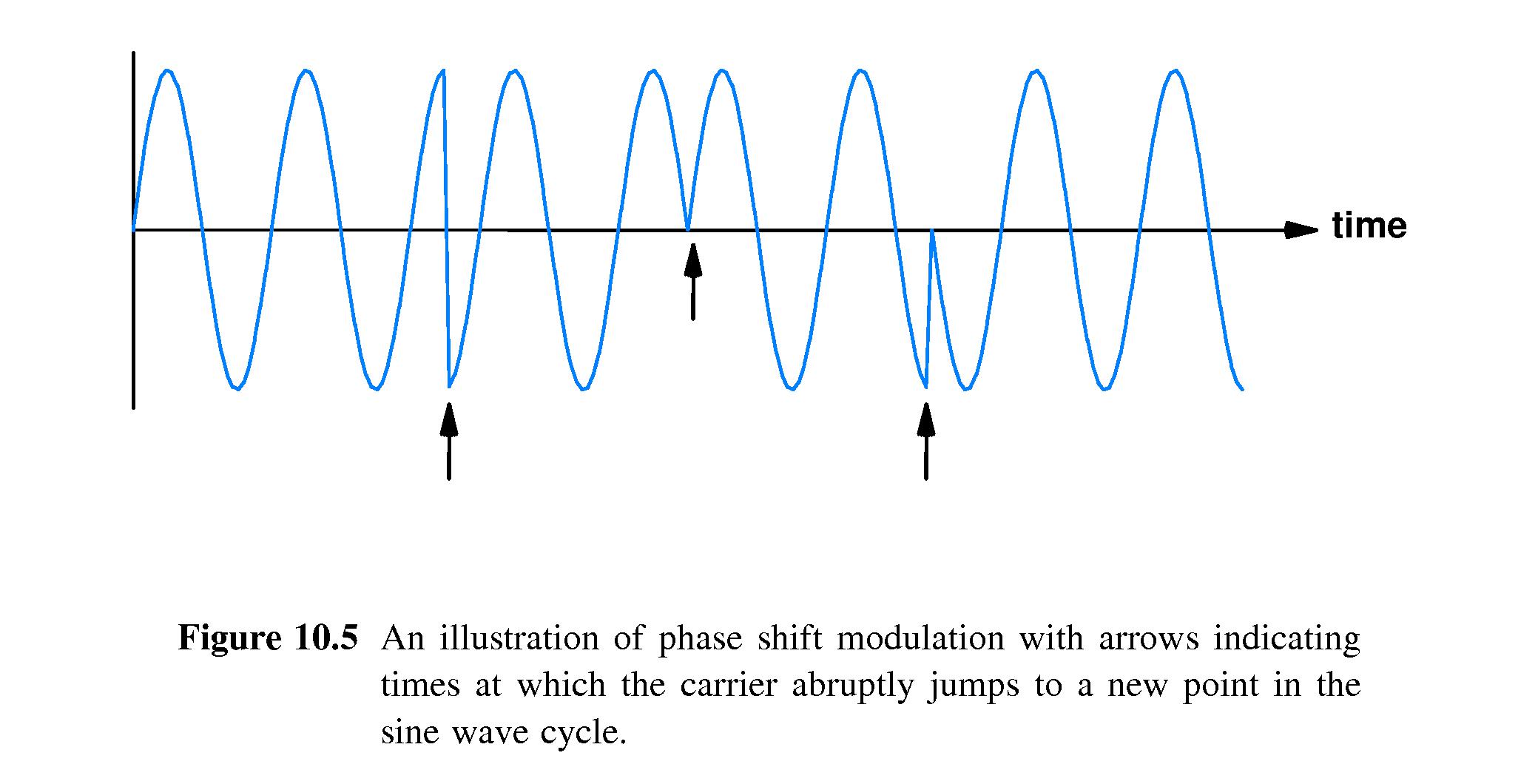
- 10.10 Phase Shift and a Constellation Diagram
- The constellation diagrams (figures 10.6 and 10.7)
illustrate one- and two-bit codes that
can be implemented with phase shifting.
- Noise and distortion limit the ability of hardware to distinguish
among minor differences in phase shifts.
- Therefore it is not practical to use very many different phase shift
keys.
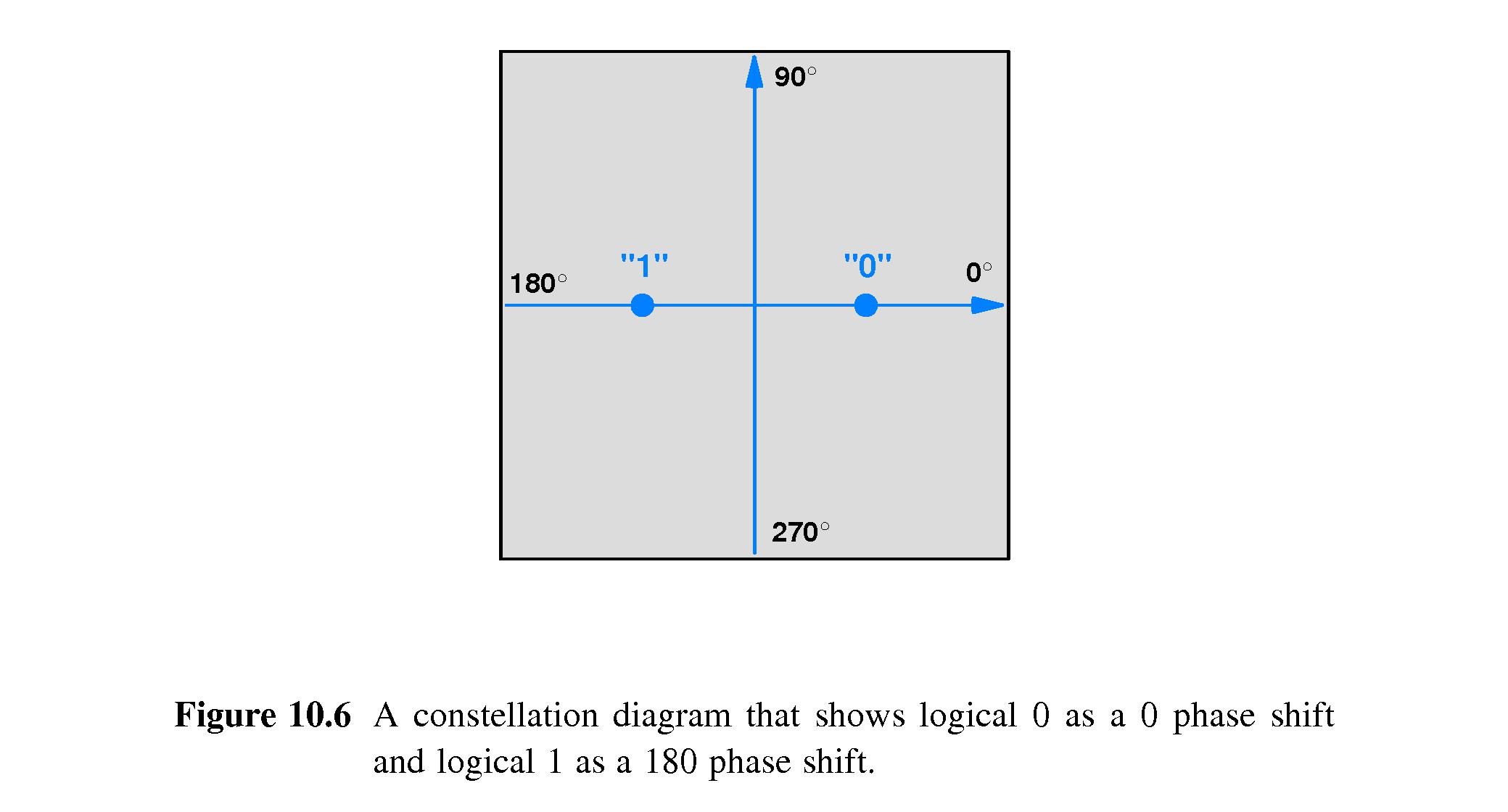
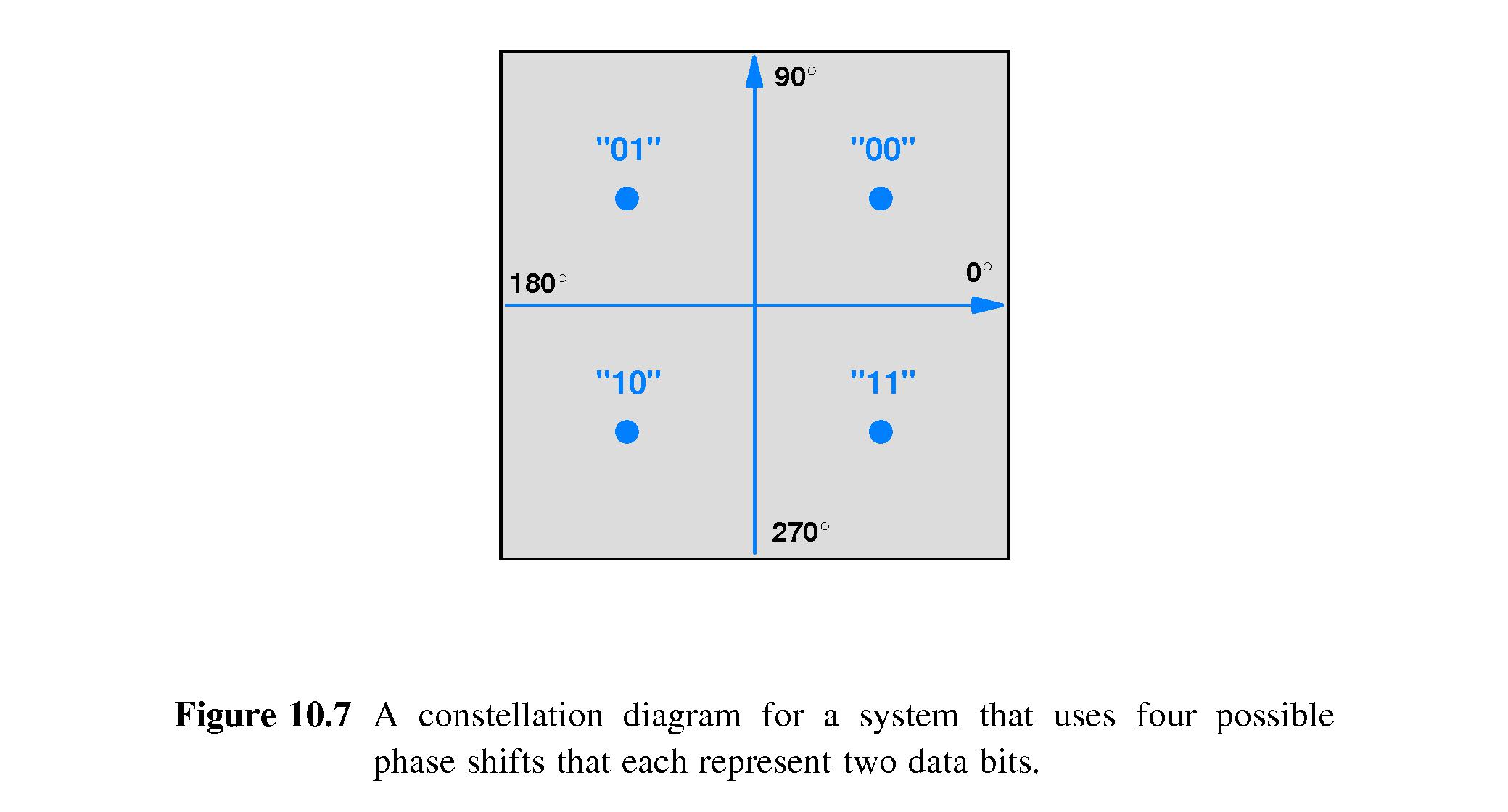
- 10.11 Quadrature Amplitude Modulation
- QAM schemes combines amplitude modulation and phase shift keying to
achieve, for example the sending of a 4-bit codeword in each period
of the carrier signal.
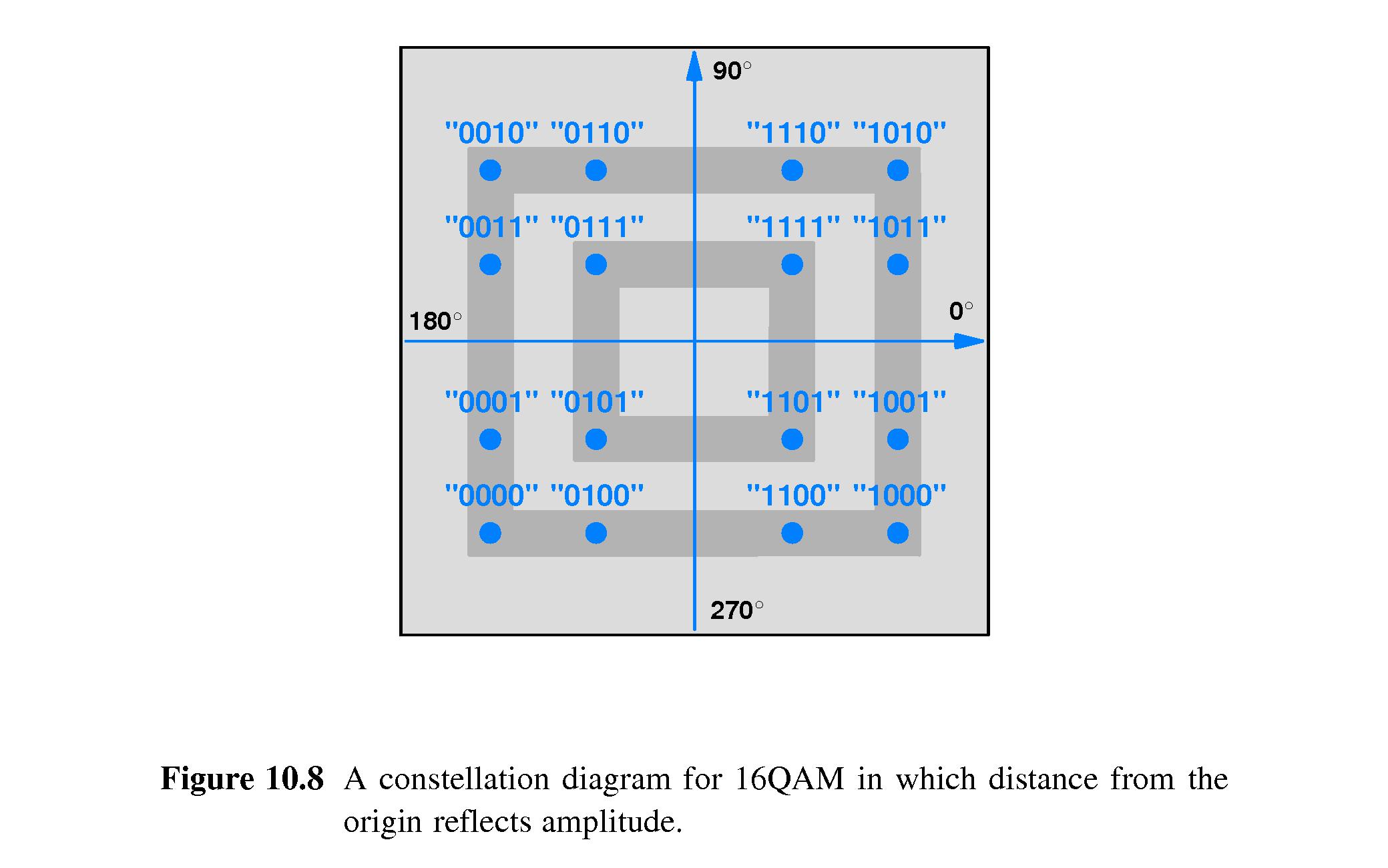
- 10.12 Modern Hardware for Modulation and Demodulation
- A modulator is a device that accepts a stream of data bits and
applies the corresponding modulation to a carrier wave (which causes
the data to be transmitted on the carrier).
- A demodulator is a device that inputs a modulated carrier
signal and extracts from it the stream of data bits that was used to
modulate the carrier. The demodulator outputs the data stream,
so it can be used as input to another device.
- Over a full-duplex communication channel using modulation and
demodulation of a carrier, a modulator and demodulator are needed on
both ends of the channel. Typically the two devices are combined
into one unit - called a modem.
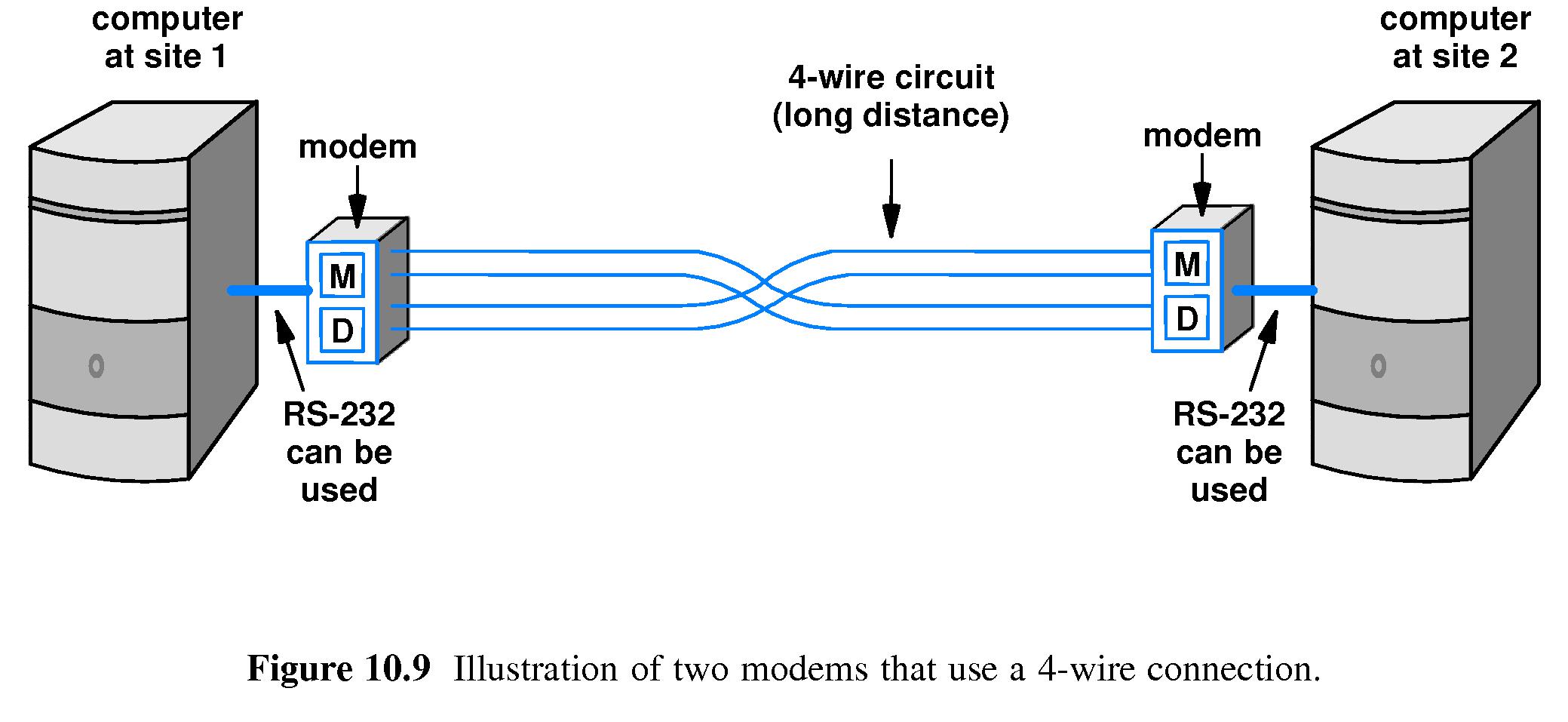
- 10.13 Optical and Radio Frequency Modems
- There are RF modems to use with RF, and
- Optical modems to use with optical fiber
- The technology varies with the media, but the principle is the same.
- 10.14 Dialup Modems
- A dialup modem modulates a (relatively low-frequency) analog audio
carrier according to digital input it receives from, say, a computer.
- Dialup modems can dial telephone numbers and answer incoming
telephone calls. In other words they combine the functionality of a
modem and a telephone.
- When dialup modems were first designed, every stage of transmission
of a telephone call was implemented utilizing modulated analog audio
carrier technology.
- Nowadays telephone companies use digital technology internally.
- Calls that travel a long distance are digitized by telephone company
equipment at a local telephone 'station' and transmitted to another
station near the other party's telephone. That station translates
the digital signal back into audio before relaying it to the other
party.
- So ironically, the digital info from a computer is translated by a
modem into analog, and back into digital by the telephone company
equipment. (Of course, the digital formats used by the computer and
the telephone company are not compatible, so some kind of
translation would be needed in any case.)
- When a modem is part of the circuitry inside a computer it is called
an internal modem. If it plugs in to the outside of a
computer, it's an external modem
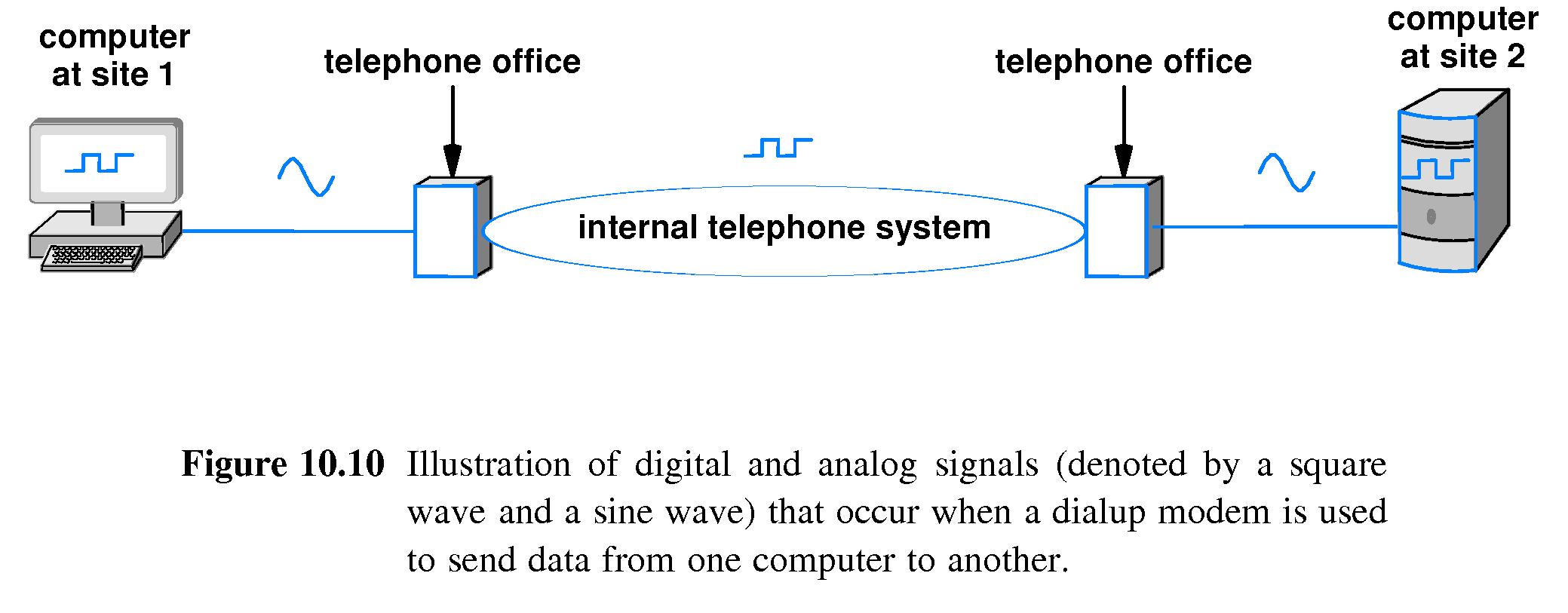
- 10.15 QAM Applied to Dialup
- QAM is used with modern dialup modems to achieve higher bit rates.
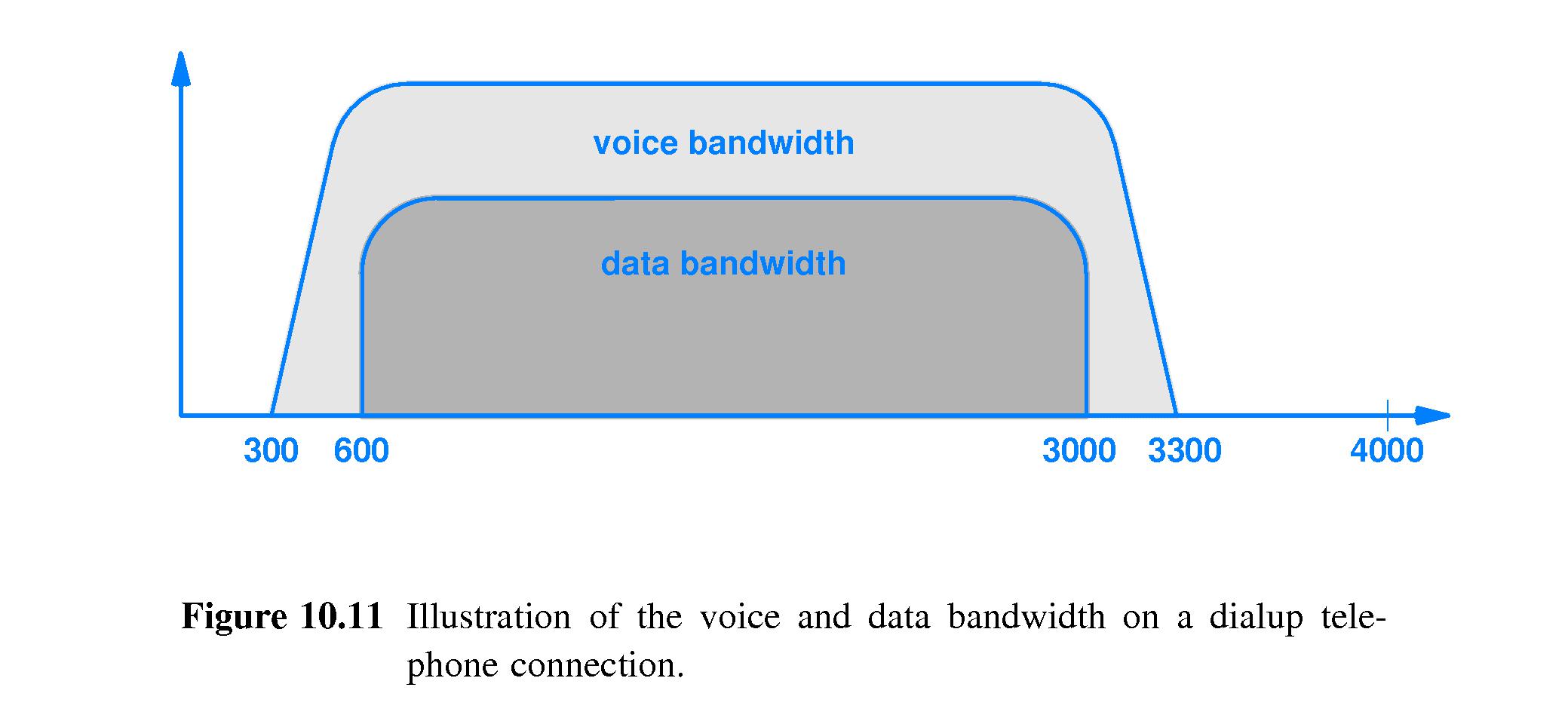
- 10.16 V.32 and V.32bis Dialup Modems
- The V.32 dialup modem standard uses 32 combinations of amplitude
shift and phase shift to achieve a full-duplex data rate of 9600 bps.
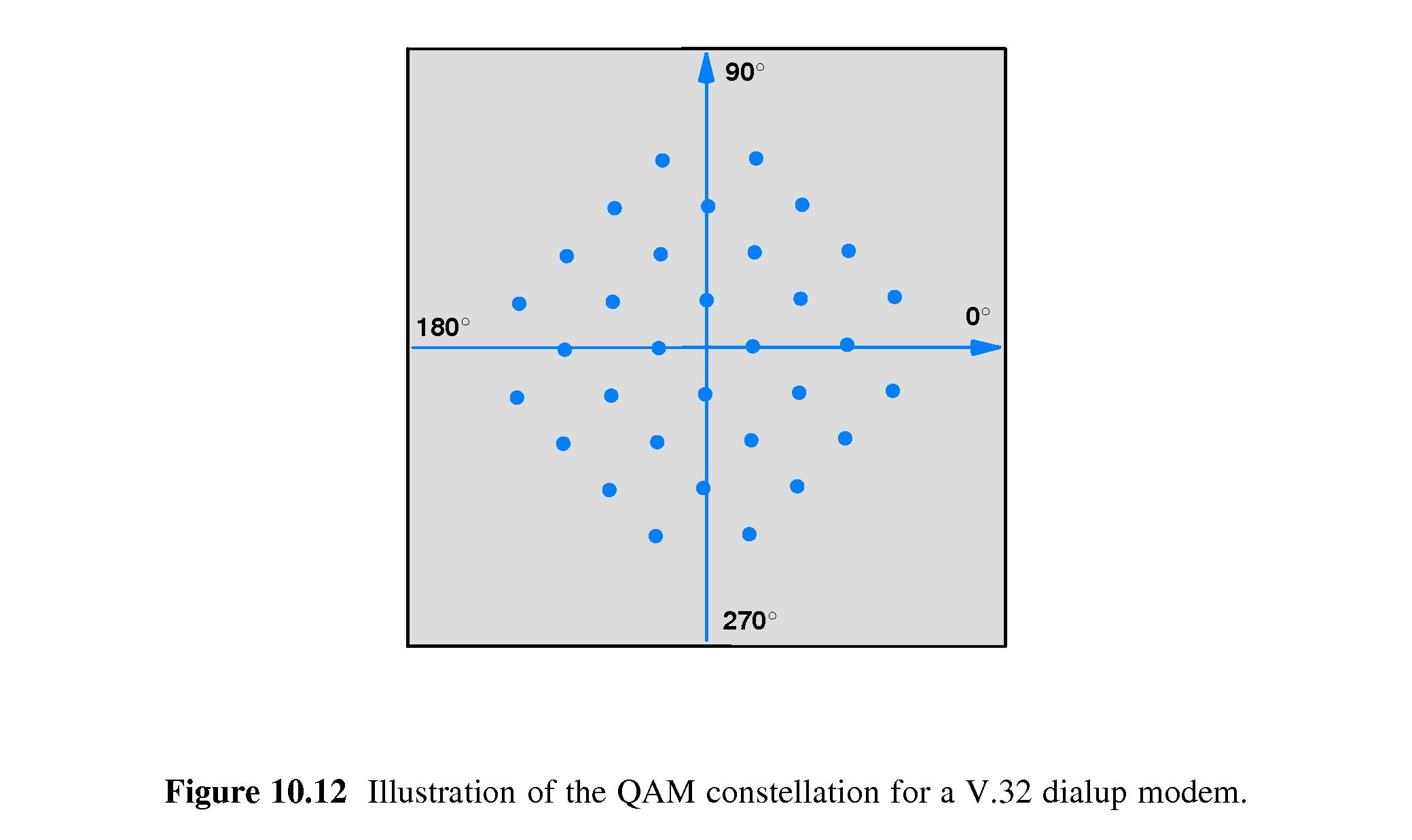
- The V.32bis standard employs 128 combinations of phase shift and
amplitude shift, and achieves a data rate of 14,400 bps (also
full-duplex).
